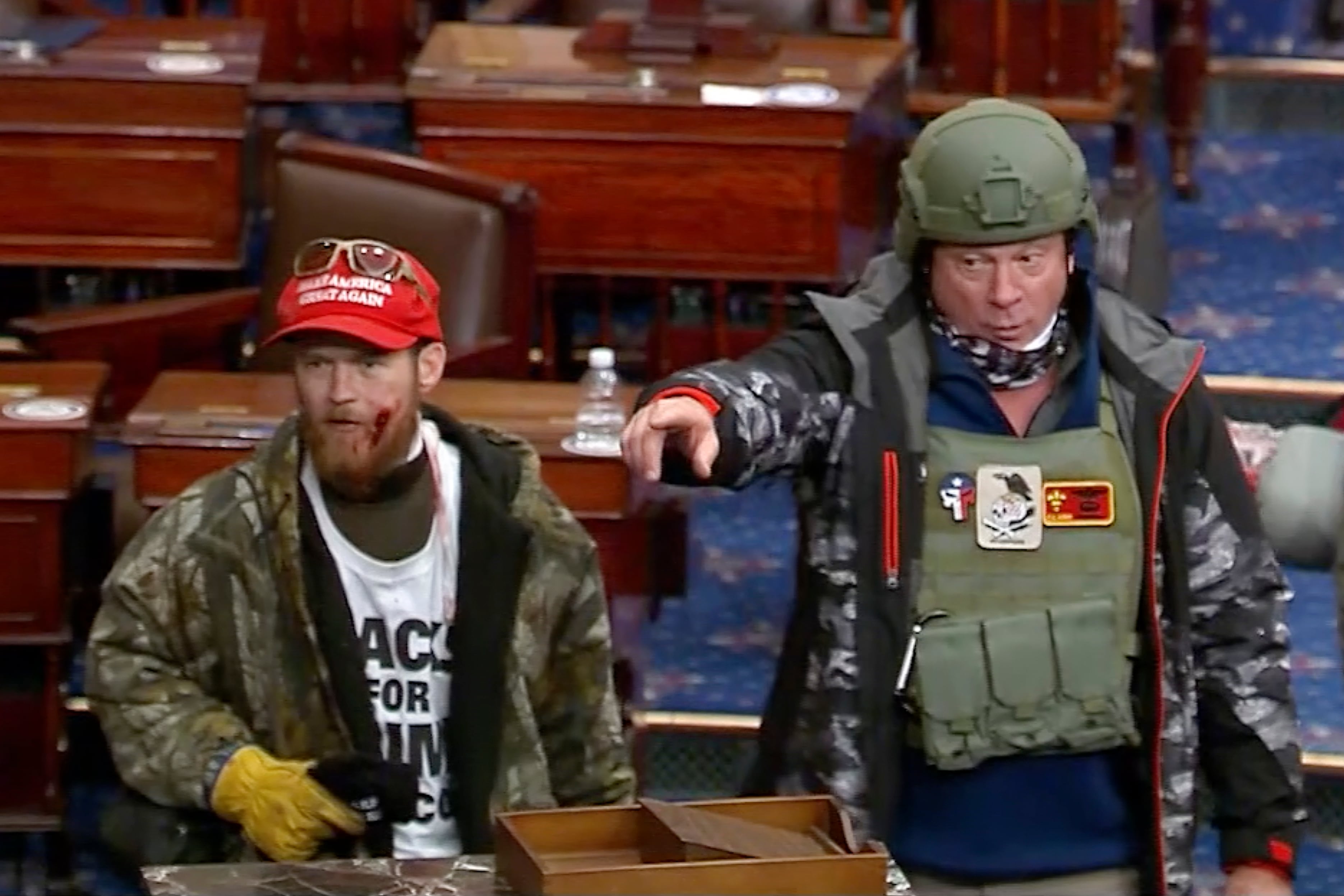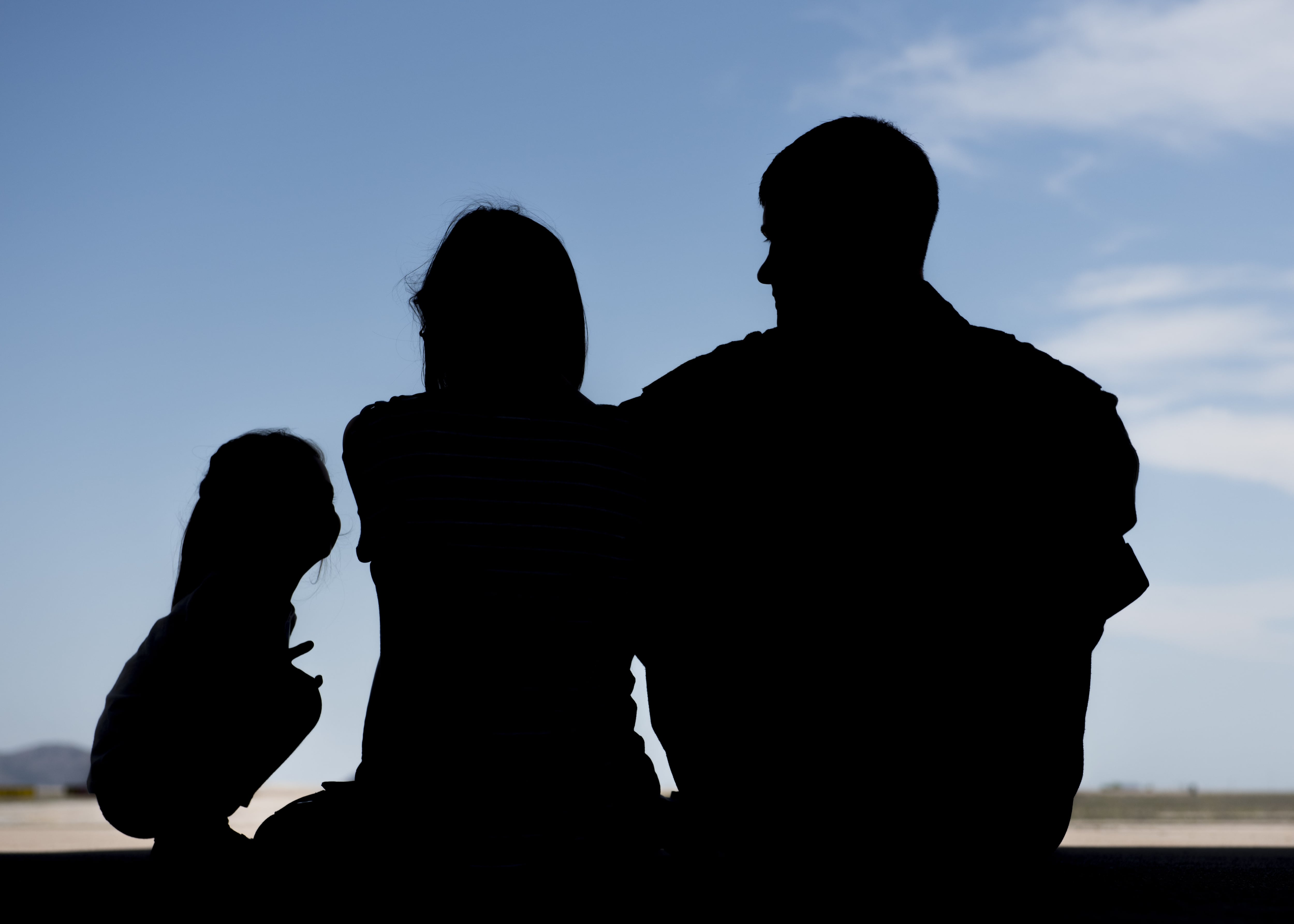A top Navy admiral acknowledged Sunday that the destroyer Fitzgerald was in danger of sinking after a catastrophic collision off the coast of Japan Saturday and was saved by the "heroic efforts" of her crew that "had to fight very hard to keep the ship afloat."
Describing one of the Navy's worst at-sea disasters in decades, Vice Adm. Joseph Aucoin told reporters at a press conference Sunday that the Fitzgerald suffered an enormous gash in its hull under the waterline, causing both berthing compartments and the auxiliary machine room to flood rapidly in the early hours of Saturday morning.
"Heroic efforts prevented the flooding from catastrophically spreading, which could have caused the ship to founder or sink," Aucoin, the head of U.S. 7th Fleet, said. "It could have been much worse. ... Because of the tireless damage control efforts of a resolute and courageous team, the ship was able to make its way back to port safely on its own power last evening."
Search and rescue divers found the remains of the seven enlisted sailors in berthing compartments that flooded immediately after the ship was struck, Navy officials said.
Aucoin added later that the actions that saved Fitzgerald happened quickly after the collision opened a rupture along the bottom of the ship.
"A significant part of the crew was sleeping. Two compartments that house 116 members of the crew [were flooding], and it was a significant impact to the side of the ship.
"You can't see most of the damage. Most of the damage is below the waterline, near the keel of the ship, so the water flow was tremendous."
Aucoin said the crew, with a total of about 300 sailors, had very little time to react and get moving.
"There wasn’t a lot of time in those spaces that were open to the sea," he said. "As you can see now, the ship is still listing and so they had to fight the ship to keep it above the surface. It was traumatic.
"How much warning they had? I don’t know. That will be found out during the investigation. The crew had to fight very hard to keep the ship afloat."
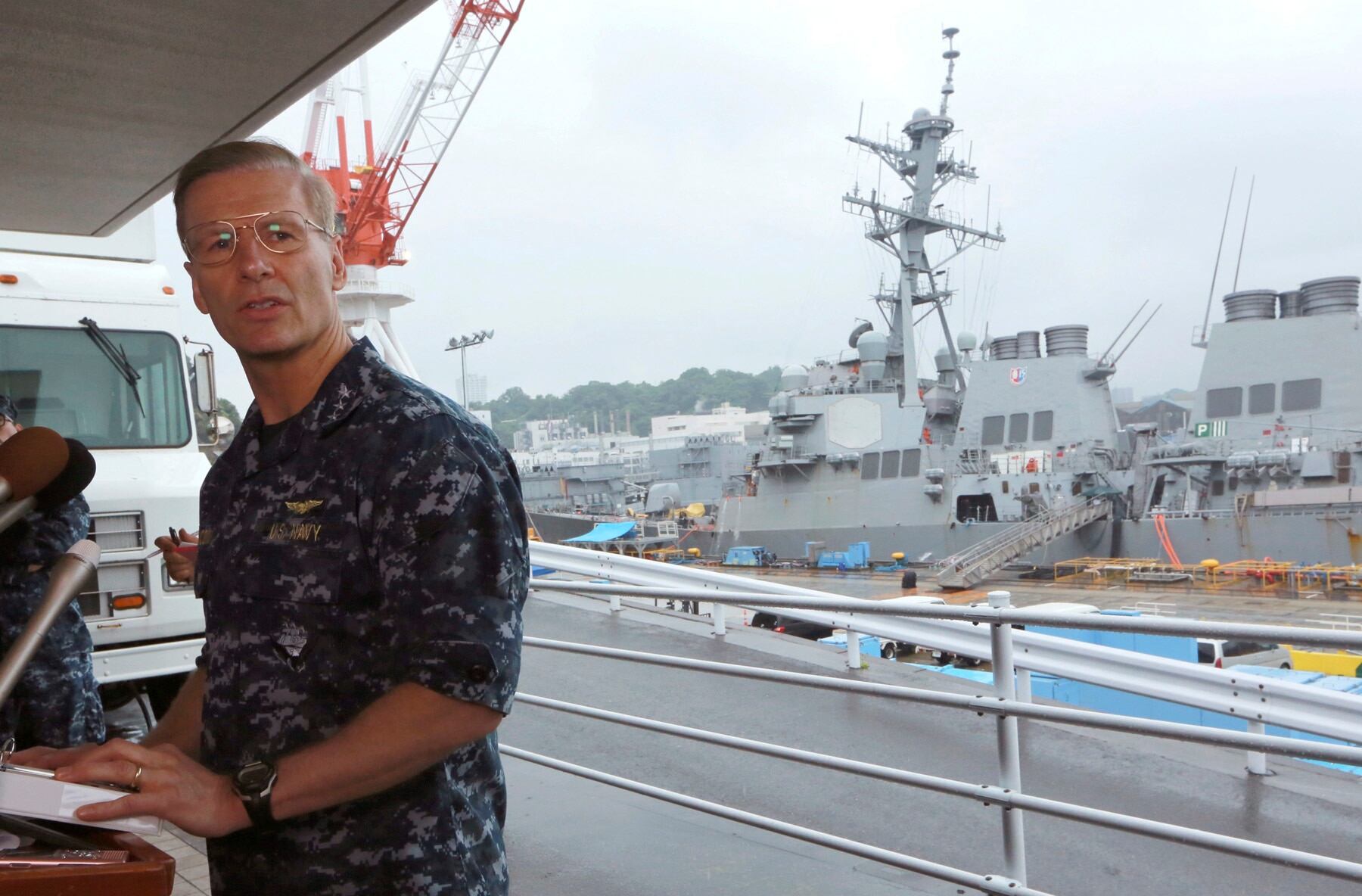
Vice Adm. Joseph Aucoin, Commander of the U.S. 7th Fleet, speaks during a press conference with the damaged USS Fitzgerald as background at the U.S. Navy base in Yokosuka, southwest of Tokyo Sunday, June 18, 2017.
Photo Credit: Eugene Hoshiko/AP
The mother of a Fitzgerald sailor who survived a direct hit to his sleeping berth says her son kept diving back down to try to save his shipmates until the flooded berth began running out of air pockets.
Mia Sykes of Raleigh, North Carolina, told The Associated Press on Sunday that her 19-year-old son Brayden Harden was knocked out of his bunk by the impact, and water immediately began filling the berth.
Sykes says her son told her that the men sleeping on bunks above and below him were among those who died.
Sykes says her son told her that sailors initially believed they were under attack and some immediately went to man the guns.
Harden is from Herrin, Illinois, and recently was redeployed.
The collision that claimed the lives of seven sailors is one of the worst at-sea accidents since the 1975 collision between the cruiser Belknap and the carrier John F. Kennedy that claimed eight lives. Aucoin said he had initiated an investigation.
"We owe it to our families and the Navy to understand what happened," he said. "Under my authority, I am initiating a JAGMAN investigation into this collision, and I will appoint a flag officer to lead that investigation."
It's unclear if the collision alarm sounded prior to the incident but Aucoin told reporters the ship's captain was trapped in his cabin by the collision, which means Cmdr. Bryce Benson did not have time to get to the bridge where he would normally be if he had enough advanced warning that a collision was imminent. Benson was seriously injured in the collision and was later evacuated from the ship.
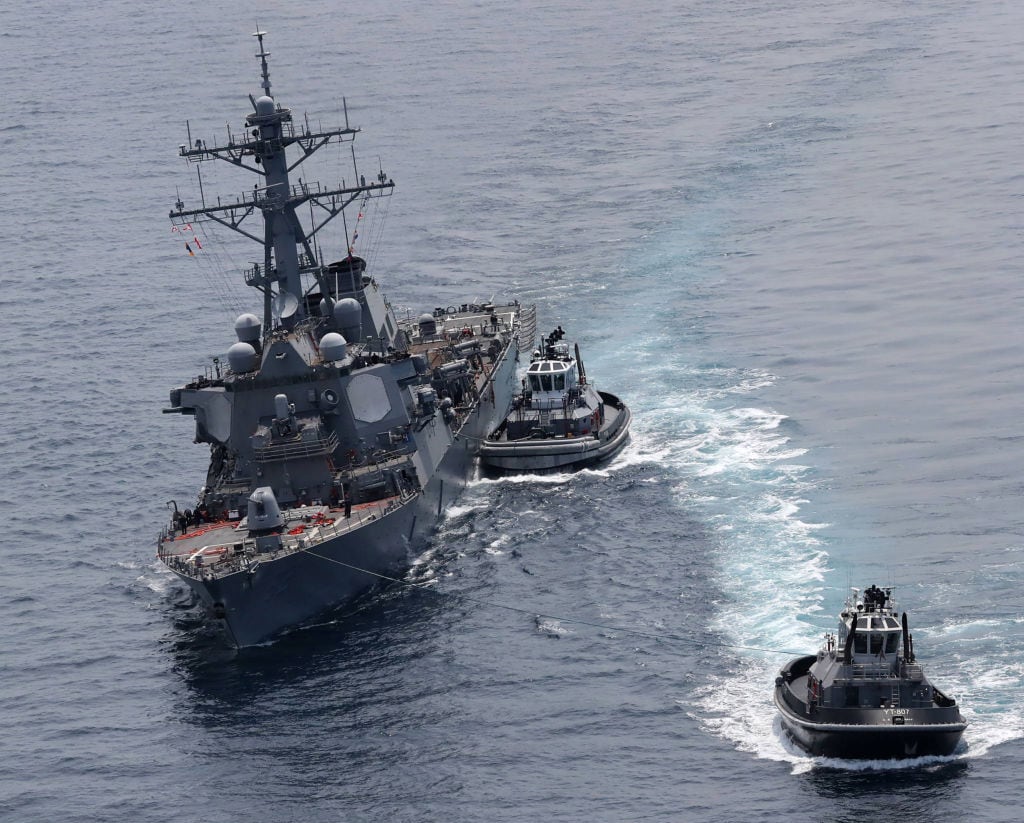
This picture shows the guided missile destroyer USS Fitzgerald next to tugboats off the Shimoda coast after it collided with a Philippine-flagged container ship on June 17, 2017.
Photo Credit: AFP via Getty Images
Beyond heroic
It's precisely the lack of warning that makes the crew's efforts so impressive, said retired Capt. Paul Rinn, who in 1988 led the successful damage control effort that saved the frigate Samuel B. Roberts after it struck an Iranian mine in the Persian Gulf.
"I don't think they were alerted at all, I don't think they were aware," Rinn said. "To go from that position, asleep in their racks, to setting [watertight boundaries] and stop progressive flooding: It's not just heroic, from my view of it, but incredibly professional and they had to be very well trained to do it."
"You couldn't have done that if you were disorganized. There had to have been great leadership down there," Rinn told Navy Times in an interview. "Petty officers and sailors took charge and saved the ship."
Retired Capt. John Eckelberry, who was Rinn's executive officer on Sammy B, said in some ways what the Fitzgerald's sailors faced Saturday an even greater challenge than his crew did in 1998 because it seems Fitzgerald had little — if any — warning.
"It seems like they went from asleep to being cold, wet and in the dark in seconds," Eckelberry told Navy Times in an interview. "On the Roberts, that happened in the afternoon; we knew we were in a minefield; we knew we were in danger. Everyone was up, everyone was on their toes.
"It's tough to react quickly in the middle of the night," he continued. "Maybe they had seconds, maybe they had no warning at all. That's not a situation I'd want for anybody."
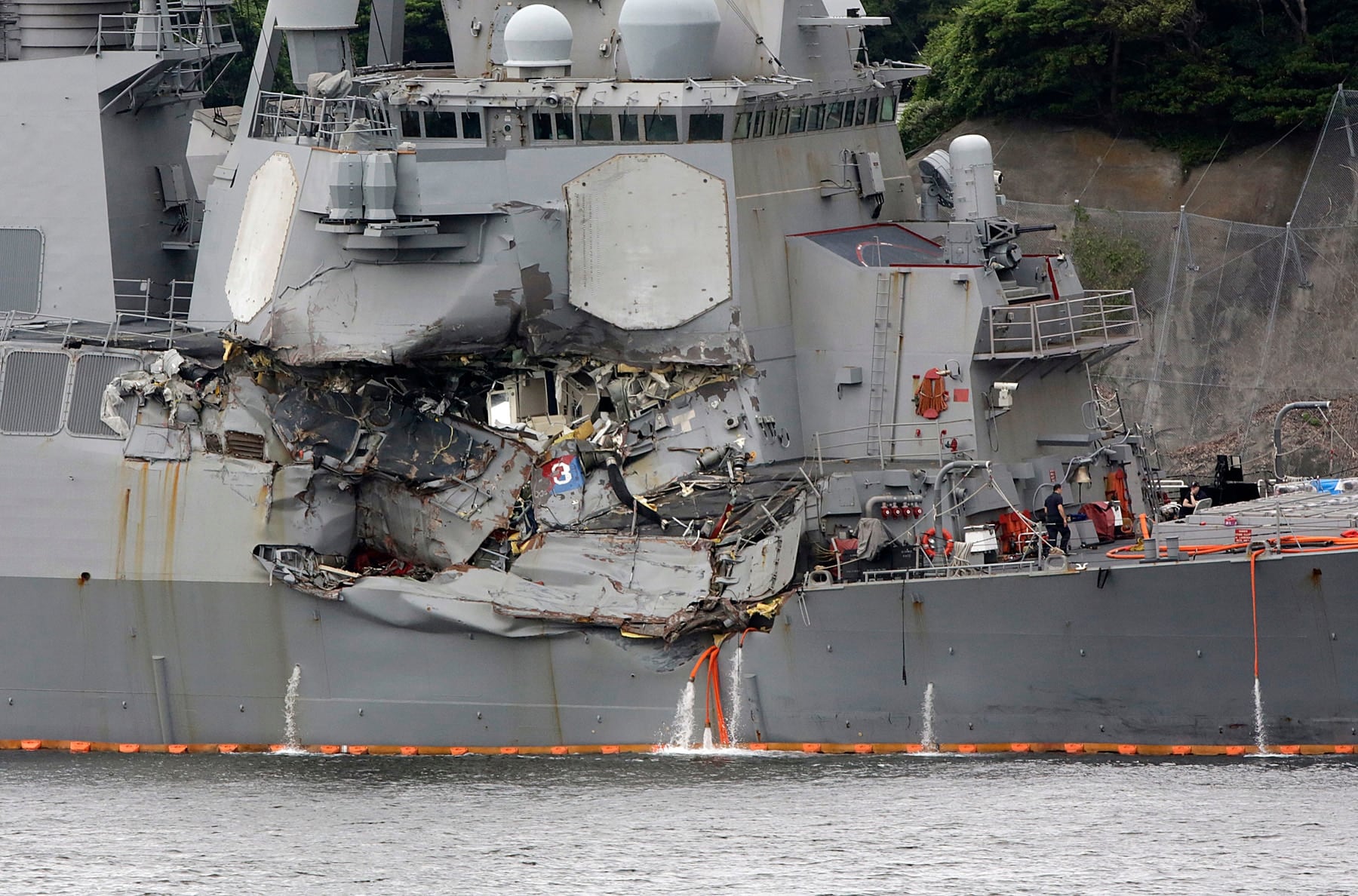
The damaged USS Fitzgerald is seen at the U.S. Navy base in Yokosuka, southwest of Tokyo Sunday, June 18, 2017.
Photo Credit: Eugene Hoshiko/AP
"Lucky to be alive"
The collision occurred just after 2:30 a.m. local time about 50 nautical miles southwest of Yokosuka, a high-traffic area near one of Japan's largest ports. Japan’s Coast Guard and navy, known as the Japan Maritime Self-Defense Force, surged to the scene, along with the U.S. destroyer Dewey. The JMSDF ships Ohnami, Hamagiri, and Enshu responded, alongside the Japanese Coast Guard ships Izanami and Kano, which aided the crew in searching for the missing seven sailors.
The massive container ship that collided with Fitzgerald, the ACX Crystal, has a dead weight listed at nearly 40,000 tons, which is roughly the size of the amphibious assault ship Iwo Jima and more than four-times larger than the 8,900-ton Fitzgerald.
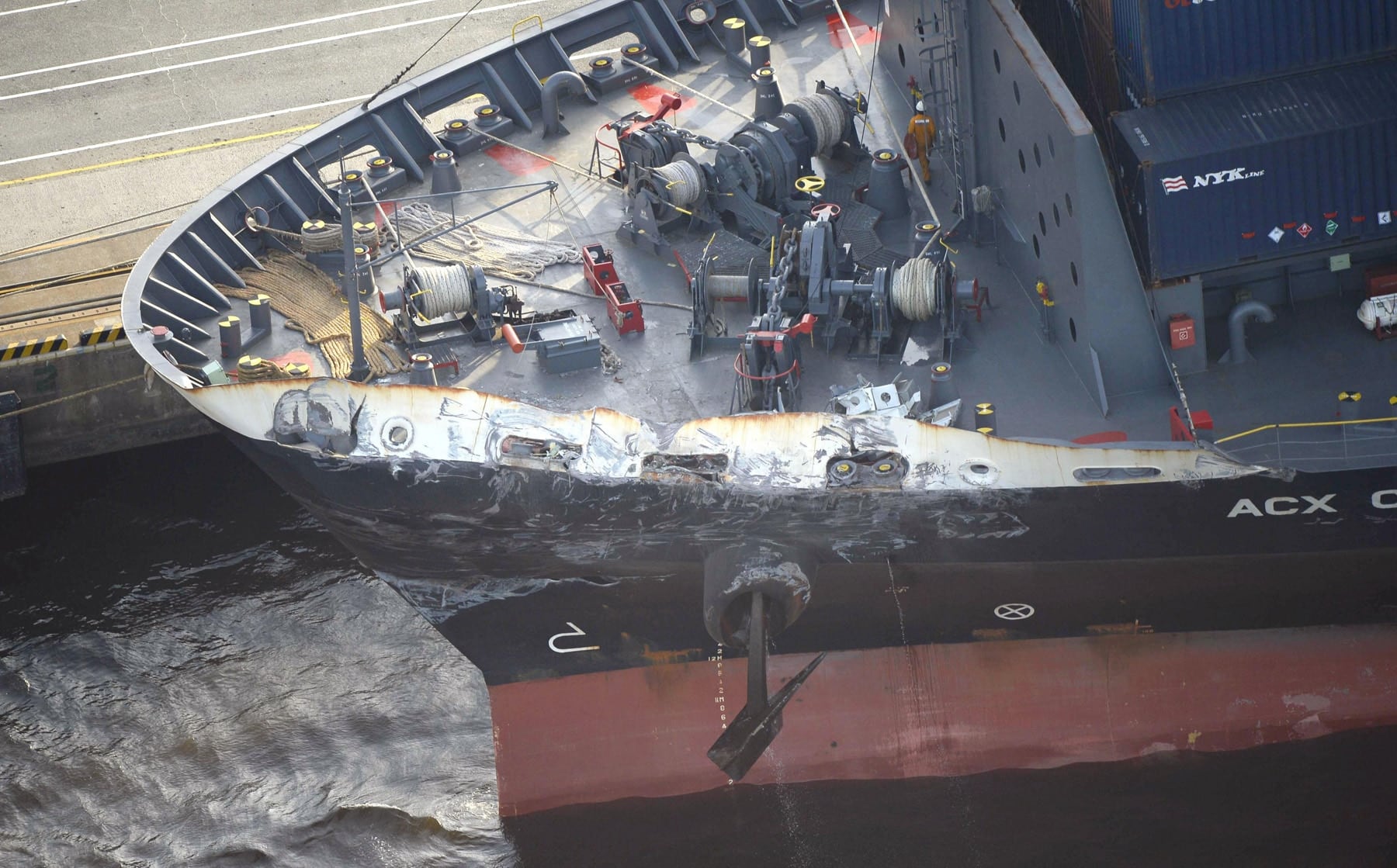
In this Saturday, June 17, 2017, photo, the container ship ACX Crystal with its left bow dented and scraped after colliding with the USS Fitzgerald in the waters off the Izu Peninsula earlier in the day, is berthed at the Oi Container Terminal in Tokyo.
Photo Credit: Hitoshi Takano/Kyodo News via AP
The collision set in motion the desperate damage control effort to curb the flooding beneath the waterline. Benson, the commanding officer, was seriously injured in the collision, which prompted the executive officer, Cmdr. Sean Babbitt, to assume command of the ship.
In his remarks, Aucoin said Benson was "lucky to be alive," and that the collision trapped him inside his stateroom. The captain's cabin, Aucoin said, was completely destroyed.
Once it was determined that seven sailors were unaccounted for, the JMSDF, Japan Coast Guard and Navy began a search and rescue effort to see if sailors were in the water. That search included a U.S. P-8 Poseidon aircraft, two JMSDF helicopters and a JMSDF P-3 Orion aircraft.
Aucoin asked people to keep the crew and their families in their prayers.
"To be clear: My sole focus now has shifted to helping the grieving family, crew and friends of the Fitzgerald," he said. "The Navy family comes together during a tragedy, and I want to thank the entire Yokosuka community rallying their support in these difficult days.
"Fellow Sailors, family members, and civilian members of the Navy team were all out here last night to welcome Fitzgerald home and provide the crew and grieving families with food, blankets, clothes, and emotional support. ... I ask all of you to keep the affected families in your thoughts and prayers, and respect their privacy as we work to get them the answers they deserve regarding their loved ones."
The Associated Press contributed to this report.
David B. Larter was the naval warfare reporter for Defense News.


